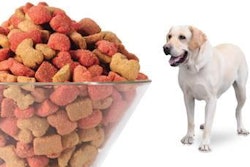A memorandum of understanding between the Association of American Feed Control Officials and the US Food and Drug Administration pertaining to the former’s feed ingredient definition process is due to expire in September 2012. FDA has indicated it does not intend to continue its participation in the process when the agreement expires. There is the possibility of a “legislative fix” that may avert FDA’s departure from its current involvement. However, if FDA does bow out of any further contribution to this effort, it may dramatically affect AAFCO’s function in the establishment of new ingredient definitions in the future.
FDA and AAFCO have successfully cooperated in the establishment of new and amended animal feed ingredient definitions for decades. FDA’s Compliance Policy Guide Sec. 665.100 (first issued in 1980) recognizes AAFCO definitions as constituting the common or usual names for animal feed ingredients, including those for use in petfood, as contemplated by the Federal Food, Drug and Cosmetic Act for purposes of proper label declaration. In turn, FDA has assisted AAFCO by providing scientific support in assessment of the safety and utility of proposed ingredients. In 2007, both organizations agreed to a set of conditions by which this cooperative effort could continue.
However, FDA’s concern now is whether an AAFCO feed ingredient definition by itself can be considered a “legal home” for that ingredient. Unlike a generally recognized as safe (GRAS) determination or a food additive petition, AAFCO definitions are established using informal procedures, whereby FDA’s lack of objection to an ingredient that has gone through the process is based on enforcement discretion.
As I understand it, FDA’s general counsel has advised the agency that these discretionary policies need to be curtailed, and all new ingredients must be subject to more formal review and acceptance procedures. In fact, there is an indication that eventually all ingredients, even those already defined by AAFCO and used for many years, would be subject to be reevaluation under this new FDA paradigm.
Frankly, it would be very difficult for AAFCO to continue its ingredient definition process as currently conducted without FDA’s participation and scientific input. Also, there is a strong desire to avoid two lists, one from AAFCO and one from FDA.
Anticipating this likely turn of events, a presentation at the AAFCO meeting in January suggested a revision of AAFCO’s function. Rather than acting as a means to simply define ingredient names and terms to allow for consistent use in the market, it is envisioned that AAFCO would become a standard-setting body, constructing a monograph for each ingredient similar to those published in the Food Chemical Codex for food ingredients.
The contents of a feed ingredient monograph would greatly expand on the AAFCO definitions, covering aspects not currently addressed such as description of non-proprietary processing methods, identification of potential contaminants and analytical methods (see sidebar). Most important to note is that monographs would be written only after the ingredient was determined to be GRAS or approved as a food additive. Also, FDA would not intimately participate in the monograph process, though it would assign a liaison to AAFCO to observe and advise.
There are a lot of aspects to be considered before this proposal becomes a reality, however. Issues such as liability, potential conflicts of interest, the monies needed to support the process and protection of copyright and proprietary information must be addressed. Also of concern is the likely length of time needed to write a monograph and whose expertise (besides FDA’s) would be involved in the process.
A feed industry organization has requested a one-year extension of the memorandum of understanding while it attempts a legislative initiative to amend existing federal law. If successful, it would embed formal recognition of AAFCO feed ingredient definitions directly into the Federal Food, Drug and Cosmetic Act. The intended effect would be to eliminate the present concerns regarding discretionary enforcement and essentially keep the current AAFCO definition process intact.
As far as I am aware, neither FDA nor AAFCO has indicated publicly whether an extension will be granted. Whether the US Congress will abide with this requested amendment also is up in the air at this time.















